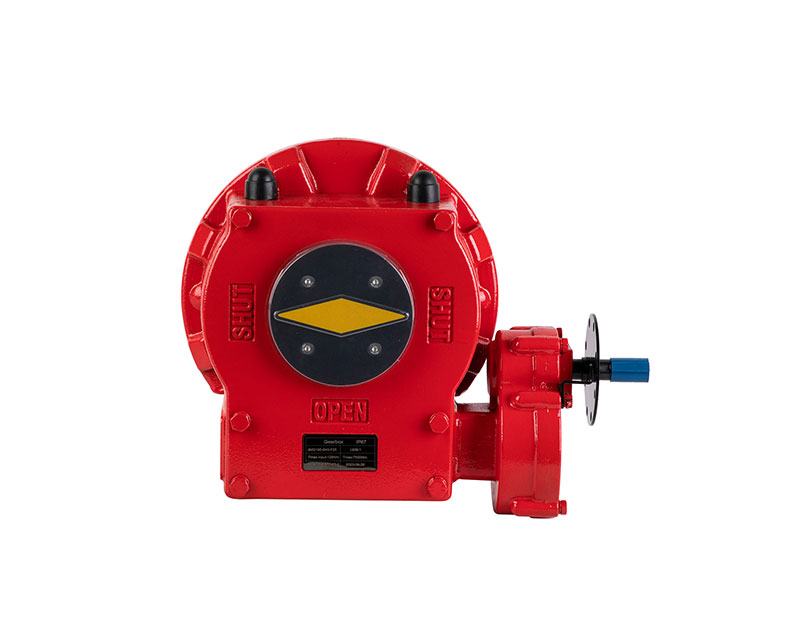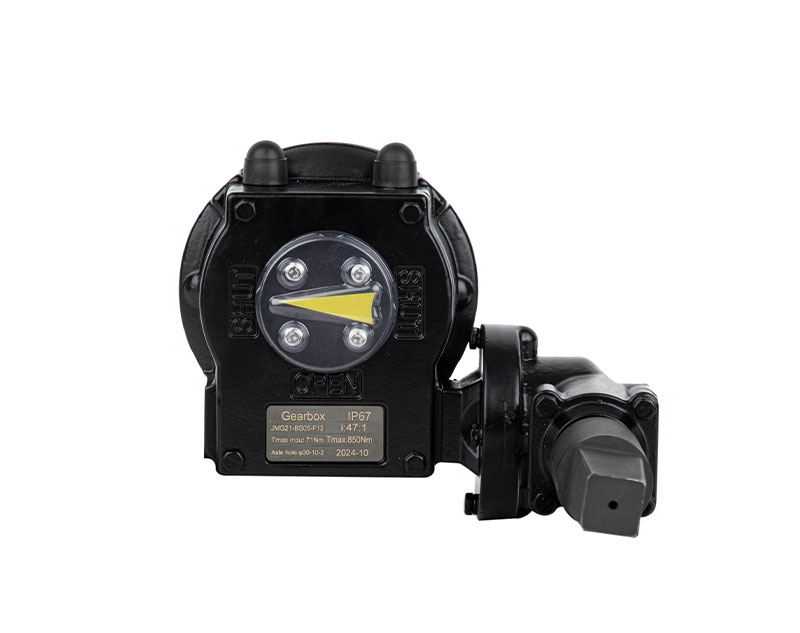Understanding the Key Differences: Heavy Duty Pneumatic Actuators vs. Rack-and-Pinion Pneumatic Actuators
In industrial automation and process control, pneumatic actuators play a pivotal role in converting compressed air energy into mechanical motion. Among the diverse types of actuators, heavy duty pneumatic actuators and rack-and-pinion pneumatic actuators are widely used but often confused due to their overlapping applications. This article delves into their structural differences, operational principles, and ideal use cases to help engineers and decision-makers select the optimal solution for their systems.
1. Design and Working Mechanism
Heavy Duty Pneumatic Actuators
Heavy duty pneumatic actuators, often referred to as piston-style actuators, rely on a piston-cylinder mechanism. Compressed air acts on a dual or single piston housed within a robust cylinder, generating linear or rotary motion. These actuators are engineered for high-force output, leveraging large piston surface areas to deliver substantial torque or thrust. Key components include:
-
1. Piston and cylinder assembly
-
2. Spring return mechanism (for fail-safe operation)
-
3. Durable seals and bearings
Their design prioritizes sturdiness, making them suitable for high-pressure environments and repetitive heavy-load operations.

Rack-and-Pinion Pneumatic Actuators
Rack-and-pinion actuators employ a linear-to-rotary motion conversion system. A piston (rack) with teeth meshes with a rotary gear (pinion). When air pressure drives the rack linearly, the pinion rotates, producing rotary motion. This compact design is known for its simplicity and efficiency in applications requiring precise angular movement. Key features include:
-
1. Toothed rack and pinion gear
-
2. Compact housing
-
3. Lightweight construction
This mechanism excels in rapid cycling and moderate torque applications.
2. Performance Comparison
| Parameter | Heavy Duty Actuators | Rack-and-Pinion Actuators |
|---|---|---|
| Load Capacity | High torque/thrust for heavy loads | Moderate torque, suited for lighter to medium loads |
| Motion Type | Linear or rotary (via scotch yoke) | Primarily rotary |
| Durability | Built for extreme conditions, long lifespan | Less robust under continuous high stress |
| Speed & Precision | Slower cycle time, high precision | Faster cycling, slightly lower precision |
| Maintenance | Complex due to multiple components | Simple, fewer wear parts |
| Cost | Higher initial investment | Cost-effective for mid-ra |
3. Application Scenarios
Heavy Duty Pneumatic Actuators
-
* Valve automation: High-pressure ball valves, gate valves, or butterfly valves in oil/gas, chemical, or power plants.
-
* Heavy machinery: Presses, lifting systems, or material handling requiring high force.
-
* Harsh environments: Applications exposed to extreme temperatures, corrosive media, or vibration.
Rack-and-Pinion Pneumatic Actuators
-
* Process automation: Quarter-turn valve control (e.g., ball valves in water treatment).
-
* Packaging and assembly lines: Quick-positioning tasks like clamping, sorting, or indexing.
-
* Light industrial systems: HVAC dampers, conveyor systems, or robotics requiring compact rotary motion.
4. Selection Criteria
Choosing between the two depends on:
-
1. Torque requirements: Heavy duty actuators for >1,000 Nm; rack-and-pinion for <500 Nm.
-
2. Cycle frequency: Rack-and-pinion for high-speed operations; heavy duty for slower, sustained loads.
-
3. Environmental factors: Heavy duty variants for corrosive or explosive atmospheres (ATEX-certified options).
-
4. Budget constraints: Rack-and-pinion offers lower TCO for non-critical applications.
5. Conclusion
While both actuators serve the core purpose of motion control, their differences lie in design philosophy and performance boundaries. Pneumatic actuators are the workhorses for demanding, high-force industrial processes, whereas rack-and-pinion actuators shine in cost-sensitive, rapid-cycle applications. By aligning their strengths with operational needs, businesses can enhance system efficiency, reduce downtime, and optimize lifecycle costs.
For tailored solutions, consult with pneumatic specialists to evaluate pressure ratings, ISO standards compliance, and industry-specific certifications.








